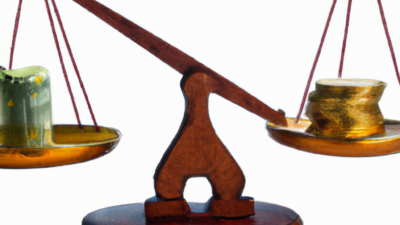**Understanding the Architects of Monetary Policy in India**
Navigating the intricate landscape of an emerging economy demands a robust and dynamic monetary policy framework. In India, a country characterized by its diverse economic fabric and rapid growth trajectory, the formulation and execution of monetary policy is a task of paramount importance. But who are the key players behind these critical decisions that shape the nation's financial stability and growth prospects? This article delves into the institutional and individual architects of India's monetary policy, exploring the roles, responsibilities, and influences that guide the economic helm of the world's largest democracy. From the Reserve Bank of India's pivotal role to the contributions of key policymakers and advisory bodies, we unravel the intricate web of decision-making that steers India's economic course.
Sure! Below is a suggested content outline for an article that discusses who formulates monetary policy in India:
In India, the formulation of monetary policy is primarily the responsibility of the Reserve Bank of India (RBI). Established in 1935, the RBI is the nation's central bank and plays a crucial role in managing the country’s monetary stability, controlling inflation, and fostering economic growth.
The framework for monetary policy in India underwent significant changes with the establishment of the Monetary Policy Committee (MPC) in 2016. The MPC was constituted to bring more transparency and accountability to the process. This committee is responsible for setting the benchmark policy interest rate, also known as the repo rate, which is the rate at which the RBI lends money to commercial banks.
The MPC consists of six members: three officials from the RBI, including the Governor who acts as the chairperson, and three external members appointed by the Government of India. The external members are experts in the field of economics, banking, finance, or monetary policy. The decisions of the MPC are made by majority vote, with each member having one vote. In the case of a tie, the Governor has the casting vote.
The RBI employs a variety of tools to implement its monetary policy, including open market operations, the cash reserve ratio (CRR), the statutory liquidity ratio (SLR), and the liquidity adjustment facility (LAF). These instruments help in regulating the supply of money in the economy, influencing interest rates, and ensuring financial stability.
The primary objective of the RBI's monetary policy is to maintain price stability while keeping in mind the objective of economic growth. This dual mandate is crucial, as high inflation can erode purchasing power and destabilize the economy, while inadequate growth can lead to unemployment and social unrest.
The formulation of monetary policy in India is also influenced by various macroeconomic indicators, including GDP growth, employment figures, global economic conditions, and fiscal policy measures undertaken by the government. Regular consultations and coordination between the RBI and the Ministry of Finance ensure that monetary and fiscal policies are aligned to achieve overall economic stability and growth.
In conclusion, the Reserve Bank of India, through the Monetary Policy Committee, plays a pivotal role in formulating and implementing the country’s monetary policy. This collaborative approach ensures that the policy is well-rounded, taking into consideration various economic factors and expert opinions to steer the Indian economy towards sustainable growth and stability.













